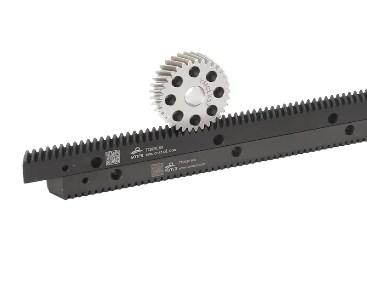How Well Can a Gear Rack System Operate in Moist or Contaminated Surroundings?

Helical Gear Racks are widely used in industrial automation, CNC machinery, and linear drive systems. Among them, the angled-tooth variant, known for smoother engagement and quieter operation, is often preferred in applications requiring precise linear motion. However, when deployed in challenging environments—such as those with high humidity, airborne dust, or abrasive particles—the suitability of such systems becomes a critical design consideration.
To begin with, the performance of any gear mechanism depends heavily on the cleanliness and lubrication of the tooth surfaces. In dusty environments, airborne particles can settle between the meshing teeth, leading to increased wear, pitting, and eventual misalignment. This is particularly important for angled-tooth racks because their design relies on gradual tooth engagement over a wider contact surface. The presence of grit or dust can act like sandpaper, accelerating degradation and reducing efficiency.
In high-humidity conditions, the concern shifts to corrosion. Most gear racks are made from steel or alloy materials, which can oxidize quickly in the presence of moisture, especially if unprotected. Corrosion not only damages tooth profiles but also impairs lubrication performance, resulting in higher friction, increased motor load, and reduced service life. Additionally, if the moisture combines with dust or debris, it can form a paste-like contaminant that sticks to the gear teeth and further disrupts smooth motion.
Despite these challenges, gear rack systems—angled-tooth types included—can be adapted for reliable operation in such environments with the right protective measures. One effective solution is the application of anti-corrosive coatings, such as black oxide or zinc plating, which can significantly improve resistance to rust and moisture. Stainless steel variants are also available for marine or wash-down settings where corrosion resistance is critical.
For dusty environments, the implementation of sealed enclosures, bellows, or protective covers can help shield the gear rack from direct exposure. These accessories prevent particle intrusion and help retain lubricants in place, especially in high-speed or heavy-load applications. Regular maintenance schedules, including cleaning and relubrication, are also vital in extending system life under such conditions.
Lubrication choice matters as well. Using a grease or lubricant specifically designed to repel moisture or prevent dust adhesion can improve overall durability. Solid film lubricants or dry coatings are also viable in certain applications, as they reduce the risk of forming sticky residues.
Ultimately, the use of gear racks with angled teeth is not inherently unsuitable for dusty or humid conditions, but it requires appropriate environmental engineering and maintenance strategies. When these precautions are in place, the performance and lifespan of the gear system can remain stable, even in less-than-ideal surroundings.
In summary, angled-tooth gear racks can function reliably in high-dust or high-humidity environments, provided they are equipped with suitable protective treatments, enclosures, and maintenance practices. Whether used in factory automation, outdoor positioning systems, or coastal facilities, proper design and care will ensure that the gear rack continues to deliver efficient, precise linear motion in the face of environmental stress.
Technical requirement
Quality Grade: DIN 8
Material: S45C
Tooth profile: helical teeth
Right Hand Angle: 19°31'42"
Hardness treatment: high frequency quenching HRC48-52°
Production process: four-sided flat grinding, fine insertion, surface blackening, or phosphating.
- Art
- Causes
- Crafts
- Dance
- Drinks
- Film
- Fitness
- Food
- Jocuri
- Gardening
- Health
- Home
- Literature
- Music
- Networking
- Alte
- Party
- Religion
- Shopping
- Sports
- Theater
- Wellness


